The Tin Tin, as known as Hergé Museum, is a tribute museum to Georges Remi, known as Hergé, the creator of Tintin, which opened in 2009. It is located in Rue du Labrador 26, Louvain-la-Neuve, Belgium, and was designed by Christian de Portzamparc. It showcases Hergé’s wide range of work, emphasizing his distinctive “clear line” style. The museum’s eight galleries spread over three floors feature over 80 original drawings, 800 photographs, and numerous artifacts, providing insight into Hergé’s life and the creation of his characters.
The museum’s opening hours are 10:30am to 5:30pm from Tuesday to Friday and until 6pm on weekends, closed on Mondays and some public holidays. The entrance fees are €12 (US $12.88, £10.40) for adults, €7 (US $7.46, £6.12) for seniors, €5 (US $5.36, £4.34) for youth (7-14 years), and free for children under 7. The museum also offers guided tours in various languages, which can be booked in advance for individuals or groups, providing a more detailed exploration of Hergé’s work.
Contents
- What do we think of the Tin Tin Museum?
- What is Hergé Museum?
- Where is the Hergé Museum?
The Hergé Museum is child-friendly. Interactive displays, activity sheets, and engaging exhibits make it an educational and entertaining destination for all ages. The museum’s emphasis on preserving and celebrating the legacy of Hergé, the genius behind Tintin, ensures that visitors leave with a deep appreciation for the world of comics and the enduring adventures of Tintin and his companions.
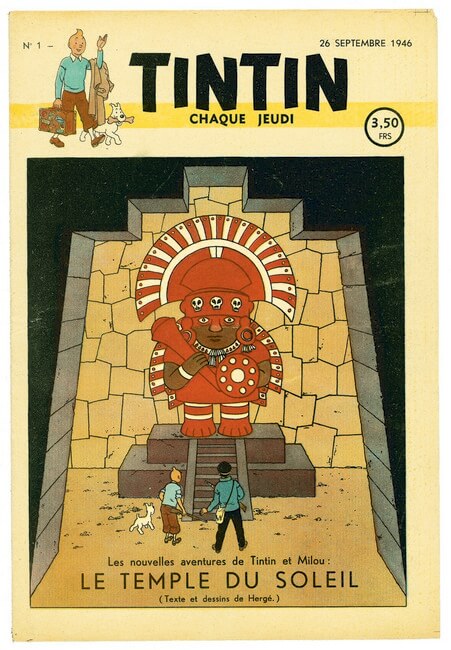
© Hergé-Moulinsart 2015
The museum’s highlight for tourists is the extensive collection of Hergé’s original artwork and memorabilia. The museum’s architecture, inspired by Hergé’s work, also adds to the visitor experience, offering a unique blend of art and design. It’s particularly child-friendly, with interactive displays, activity sheets, and child-friendly exhibits, making it an ideal destination for families.
What do we think of the Tin Tin Museum?
Usually, when I visit a museum I expect to spend about an hour there. If it’s shorter, the museum is either small or not my thing; if it’s longer, it was interesting. I spent almost two hours browsing each floor at the Hergé Museum as there is so much to discover! The available audio/video guide was superb, the building designed by Christian de Portzamparc impressive, and the exhibition very interesting.
The Hergé Museum comes highly recommended!
What is Hergé Museum?
The Tin Tin, as known as Hergé Museum, is a tribute museum to Georges Remi, known as Hergé, the creator and the mind behind the iconic Tintin comic series. The museum, opened in 2009, offers visitors a comprehensive journey into the world of Tintin and the artistic legacy of Hergé.
The Herge Museum is designed by renowned architect Christian de Portzamparc. The museums modern and colorful design reflects the vivid and imaginative worlds that Hergé brought to life through his comics. It is spread across three floors and divided into eight galleries. Tin Tin museum showcases over 80 original drawings, 800 photographs, and numerous artifacts, offering an intimate look into Hergé’s creative process, influences, and personal life.
The heart of the museum is dedicated to Tintin’s adventures, allowing visitors to explore the original artwork, characters, and memorable scenes from the beloved comic series. Hergé’s distinctive “clear line” style, which is characterized by clean and precise drawings, is on full display. The museum also delves into Hergé’s other creations, such as Quick and Flupke, Jo, Zette, and Jocko, and the lesser-known but equally captivating series. It provides a holistic understanding of Hergé’s artistic versatility and his impact on the world of comics.
Where is the Hergé Museum?
Hergé Museum is located at Rue du Labrador 26, 1348 Ottignies-Louvain-la-Neuve, Belgium, just outside the town of Louvain-la-Neuve, which is 30 km (19 miles) southeast of Brussels. Louvain-la-Neuve is in the French-speaking Walloon region of Belgium, specifically in the province of Walloon Brabant. The geographical coordinates for Villers Abbey are 50.6712° N latitude and 4.6130° E longitude.
What is the Musée Hergé exhibition?
Each room at the Hergé Museum is dedicated to a specific theme. These themes are illustrated with original drawings, magazine copies, the author’s personal items, items related to his work, and, of course, the original work itself.
Each visitor to the Musée Hergé is given a free audio guide. Each room in the museum gets about three explanations on the free audio guide, and they’re really good. I’m usually not a big fan of audio guides as I like to visit an exhibition at my own pace, but there was so much to do at the Hergé Museum that I always finished listening to the explanations before I’d seen an entire room.
What’s also nice is that the free guide isn’t just an audio guide but functions a bit like an iPod. It has explanations on it but also shows you what it is talking about in the form of photos, extracts, and interviews with Hergé. Some of the exhibition rooms in the Hergé museum even have small quizzes on the audio guide that let you test your knowledge of Hergé and his work.
Listed below are the 8 exhibition rooms of Musée Hergé, as known as Tin Tin museum.
- Room 1 – Life of Hergé. Room 1 showcases Hergé’s biography, his early works, and personal items. Hergé was born Georges Remi in 1907 and his passion for art and drawing emerged early. His Boy Scout involvement influenced his comics, leading to his first comic series and the creation of Tintin. Hergé faced accusations of fascism during WWII but denied Nazi sympathies.
- Room 2 – Hergé’s art. Room 2 displays Hergé’s versatility in art, featuring his advertisement posters, engravings, and various artworks. Despite his diverse skills, Hergé prioritized comics, dedicating his full effort to perfecting this craft.
- Room 3 – Hergé’s characters. Room 3 focuses on Hergé’s main characters, especially from the Tintin series. It includes interactive elements like quizzes to engage visitors with Hergé’s character creations.
- Room 4 – Hergé and the movies. Room 4 presents a documentary exploring the connection between Hergé’s work and movies. Hergé believed comics and movies were similar, differing only in the static nature of comic characters.
- Room 5 – The laboratory. Room 5 is dedicated to Professor Calculus’s inventions and Hergé’s research for “Explorers on the Moon”, highlights Hergé’s detailed approach, including using a scale model rocket for accuracy. Hergé notably sent Tintin to the moon years before the actual moon landing.
- Room 6 – Tintin’s travels. Room 6 exhibits the global journeys of Tintin, showcasing foreign objects from the comics. It also touches on Hergé’s later interest in paranormal and extraterrestrial themes, evident in his work.
- Room 7 – Studios Hergé. Room 7 highlights Hergé’s collaborative work post-40, this room shows how he valued teamwork, especially for coloring old Tintin albums. While Hergé continued to draw characters, he often delegated backgrounds and coloring to his team.
- Room 8 – Hergé’s fame. Room 8 celebrates Hergé’s fame and his connections with other notable figures, including a portrait of Hergé by Andy Warhol, showcasing his widespread recognition and influence.
1. Room 1 – Life of Hergé
Room 1 of the Musée Hergé gives us a biography of Hergé, illustrated with personal items and some of his earliest work.
Hergé was born as Georges Remi in 1907 in Etterbeek, Brussels. Ever since he was a child he loved art and drawing, when he joined the Boy Scouts he started illustrating comics for boy scout magazines such as Le Boy Scout. That’s also where his first real comic appeared as a series, TTotor, C.D. des Hannetons. Being in the boy scout movement greatly influenced Hergé and Tintin is often seen as the stereotype of a boy scout.
In 1924, Georges started signing his work with “Hergé”. It’s a pseudonym derived from his own name: take the initials of Georges Remi, turn them around and you get R.G., pronounced as “Hergé” in French.
One year later Hergé started working at the newspaper Le XXe Siècle and three years after that the paper asked him to add a supplement for youngsters, Le Petit Vingtième. Tintin the reporter and his dog Snowy first appeared in 1929. In 1930, Hergé created two other characters who are famous in Belgium and even had their own cartoon on television later: Quick and Flupke, two real mischievous kids from Brussels.
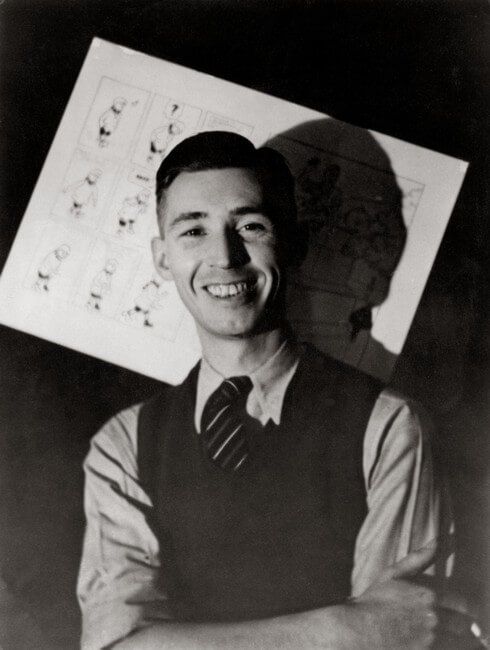
© Hergé-Moulinsart 2015
Up until 1934, Hergé’s foreign characters were often stereotypes, but when he met the Chinese student Tchang that year, who helped him research his new comic The Blue Lotus, he decided to conduct research for all of his future comics.
In 1940, the Germans invaded Belgium and put an end to Le XXe Siècle. Hergé moved The Adventures of Tintin to the newspaper Le Soir, controlled by the occupier. This and some of his associations made him a suspected fascist sympathizer.
He was arrested a few times after Belgium was liberated and forbidden to publish The Adventures of Tintin in any Belgian newspaper until 1946. Hergé would be accused of fascism and collaboration for the rest of his life, but he always denied having Nazi sympathies.
In 1942, the publisher Casterman convinced Hergé to color in all of his works to be published as full albums.
Four years later the magazine Tintin was founded and in 1950 the Studios Hergé opened. The Studios consisted of Hergé and his artist collaborators who would help him create the Adventures of Tintin and all its products. All work created by the studios was solely attributed to the Hergé except for three albums of Quick and Flupke which attribute Studios Hergé as the creator.
Hergé died in 1983, his last comic Tintin et l’Alph-art was left unfinished. He was a creator until the end.
2. Room 2 – Hergé’s art
Hergé also drew advertisement posters, engravings, as well as other art. Examples of these works are on display in Room 2 of the museum. Despite his ability to take on multiple crafts, comics were always Hergé’s priority as he believed he could only give 100% and that 100% was needed to perfect them.
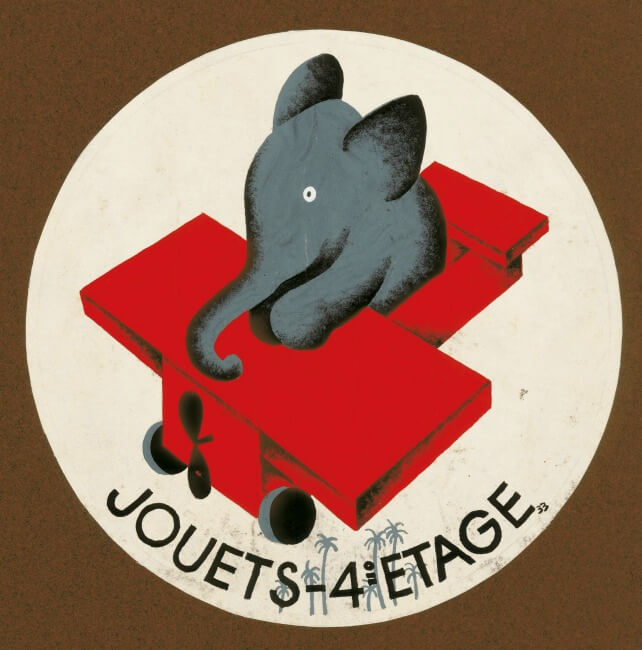
© Hergé-Moulinsart 2015
3. Room 3 – Hergé’s characters
Room 3 of the Musée Hergé focuses on Hergé’s main characters, in particular, those of the Tintin albums. The audio guide includes some quizzes about the characters. For instance, it lets you test whether you know how to tell Thomson and Thompson apart.
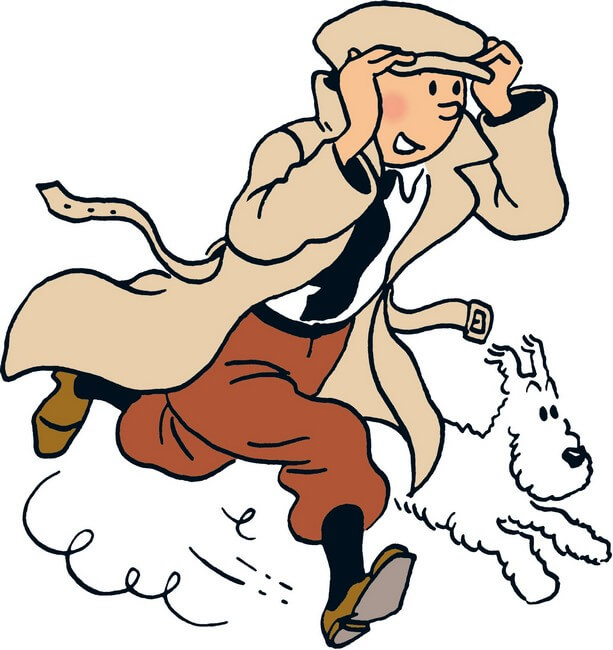
© Hergé-Moulinsart 2015
4. Room 4 – Hergé and the movies
On to Room 4 of the Musée Hergé which shows a documentary about the relationship between Hergé’s work and the movies. Hergé himself once said that a comic and a movie are basically the same things; the only difference being the characters are still.
5. Room 5 – The laboratory
Room 5 is called “The laboratory” because this room of the museum focuses on the inventions of Professor Calculus and the elaborate research Hergé and his team did for the album Explorers on the Moon. I read that comic as a kid and had no idea that Hergé even used a scale model of the rocket to get the drawings right! Fun fact: Hergé sent Tintin to the moon in 1954, 15 even before Neil Armstrong set foot there.
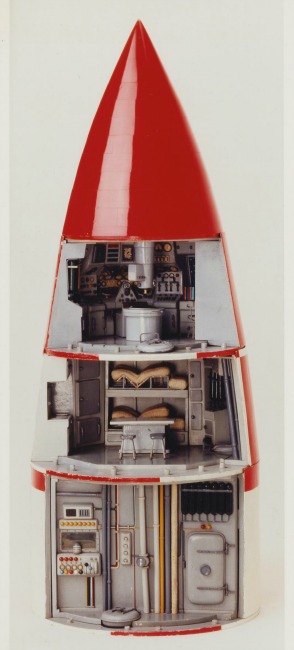
© Hergé-Moulinsart 2015
6. Room 6 – Tintin’s travels
Room 6 of the Hergé Museum shows us all the places in the world Tintin has traveled to and exhibits some of the foreign objects that appear in the comic series. It also addresses how Hergé gained an interest in paranormal activity and extraterrestrial life later on in his career and how signs of that can be found in the Tintin albums.
7. Room 7 – Studios Hergé
Until he was 40, Hergé always worked alone. After that, he began to value teamwork. Part of that was also because of the huge task ahead of him to color in all his old Tintin albums. He kept drawing the characters but often left the background and the coloring to others. For works produced after 1950 Hergé had help from his collaborators at the studio.
8. Room 8 – Hergé’s fame
The last room of the Musée Hergé is dedicated to Hergé’s fame and other famous people he knew. One of the things on display here is a portrait of Hergé by Andy Warhol.
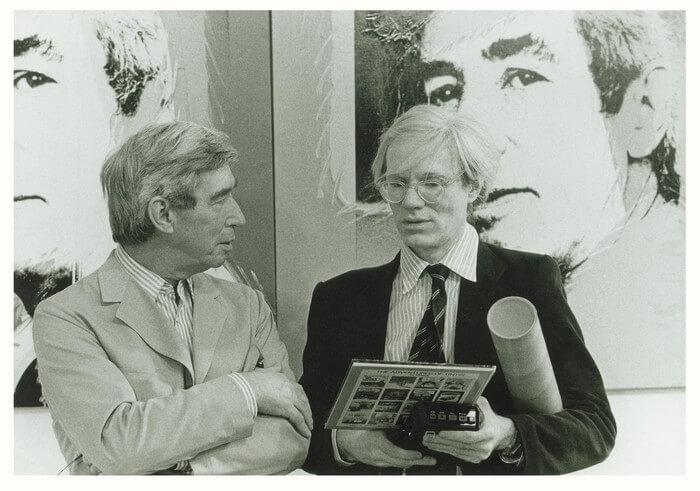
© Hergé-moulinsart 2015
How can a visitor get to Hergé Museum?
Hergé Museum is near Louvain-la-Neuve which is about 30 km (19 miles) southeast of Brussels. There are several convenient options for getting to the museum:
By Car: The museum has parking available onsite. It can be easily reached from Brussels by taking the E411 highway south.
By Train: Frequent trains run from Brussels to the Louvain-la-Neuve Station. From there, the museum is just a 5 minute walk.
By Bus: Buses run directly from Brussels and nearby towns to a stop right by the museum grounds. Check routes and schedules on the TEC website.
What are the opening hours of the Hergé Museum?
Hergé Museum is open from 10:30am to 5:30pm from Tuesday to Friday and from 10:30am to 6:00pm on Saturdays and Sundays. It is closed on Mondays and on major public holidays like Christmas and New Year’s Day. The museum advises the last ticket entry to be 30 minutes before closing time. During the spring and summer months, the museum extends its hours for special evening events, which allows year-round access for guests to delve into the life and works of Tintin’s creator Hergé, offering an opportunity to thoroughly enjoy the exhibits during weekdays and weekends.
What are the ticket prices of Hergé Museum?
The Hergé Museum offers entrance fees based on age and visitor status. Entrance fees of Hergé Museum for adults is €12 (US $12.88 or £10.40), for seniors at €7 (US $7.46 or £6.12), young children aged 7-14 is €5 (US $5.36 or £4.34) and children under the age of 6 can enter for free. Entrance is free for all visitors on the first Sunday of each month. Herge Museum, as known as Tin Tin museum offers special discounted rates for specific groups, including students, disabled visitors, and large families. Tour groups can inquire about group rates for a more economical visit. Visitors interested in exploring multiple museums in Louvain-la-Neuve can opt for museum combination passes, which grant access to partner attractions as well.
Are there any tours available for Hergé Museum?
Yes, Hergé Museum offers guided tours for groups and individuals wanting a more in-depth visit focused on Hergé’s life and artwork. Tours are led by expert guides providing commentary and insight into the expansive exhibits. There are set guided tours offered each week in French, Dutch or English covering the key galleries. Private and custom tours offered for groups, families or schools. Tour groups are limited to 25 people per guide for €100-150 (US $106.83 or £86.88) per group depending on size and tour type. Tours last 1-2 hours to allow time to explain the extensive displays. optional add-on workshops are also available for kids groups.
What is the highlight of a visit to Hergé Museum for a tourist?
The main highlight of the Hergé Museum is being able to view the collection of original artwork and memorabilia from the creator of beloved comic character Tintin. Viewing Hergé’s detailed original drawings up close makes visitors appreciate his artistic skill and the development of his unique clear line style. The museum also showcases how broader influences shaped the worlds and adventures depicted in the Tintin comic series.
Visitors to the Herge Museum are also intrigued by the colorful and dreamlike architecture of the museum building itself, designed specifically to honor Hergé’s legacy. The indoor and outdoor design creates an eye-catching atmosphere. For any Tintin enthusiast visiting Belgium, seeing these works firsthand is an unforgettable treat.
Is Hergé Museum child friendly?
Yes, the Hergé Museum is very child-friendly and a great activity for families visiting Brussels and Belgium. Younger children may especially enjoy seeing iconic vehicles and scenes recreated from the comics, like Tintin’s moon rocket or Captain Haddock’s Unicorn ship. While art appreciation tours appeal more to adults, kids are given activity sheets to stay occupied. Families with children of various ages can all find entertainment through the museum’s broad range of exhibits. The building layout is also convenient for strollers with ramps, elevators and wide pathways between galleries. The museum makes for an entertaining indoor activity for families near Brussels, even on rainy days.
What is the house rules of the Tin Tin Museum?
Listed below are the house rules of the Tin Tin Museum.
- No pets allowed, except service animals. This is to protect the artwork on display.
- No flash photography permitted. Flash can damage the original Tintin artworks. Non-flash photos are allowed.
- Do not touch the artwork. All pieces are irreplaceable originals by Hergé and could be damaged. Visitors must keep a respectful distance.
- No eating inside the galleries. Drinks are allowed but must have lids to prevent spills. The onsite cafe, Le Petit Vingtième, is the designated area for eating and drinking.
- Wheelchairs and accessibility accommodations are available. The museum was designed for visitors with limited mobility.
- Be respectful of other visitors and staff. Do not create disturbances that interfere with others’ experience.
PIN FOR LATER

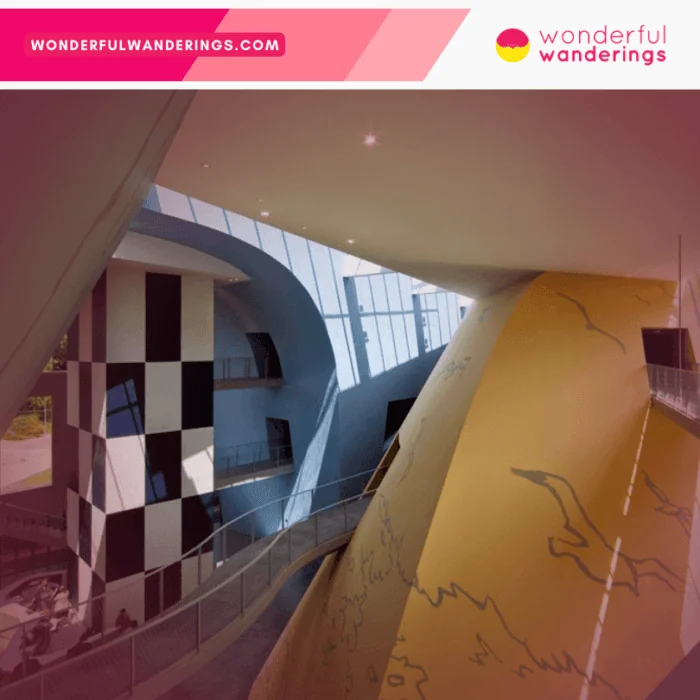
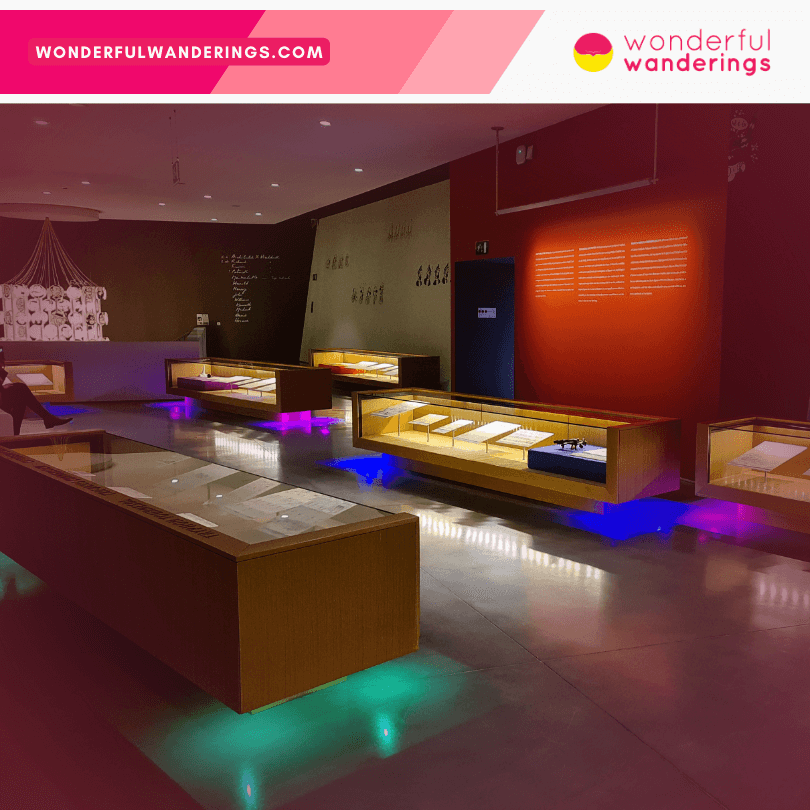
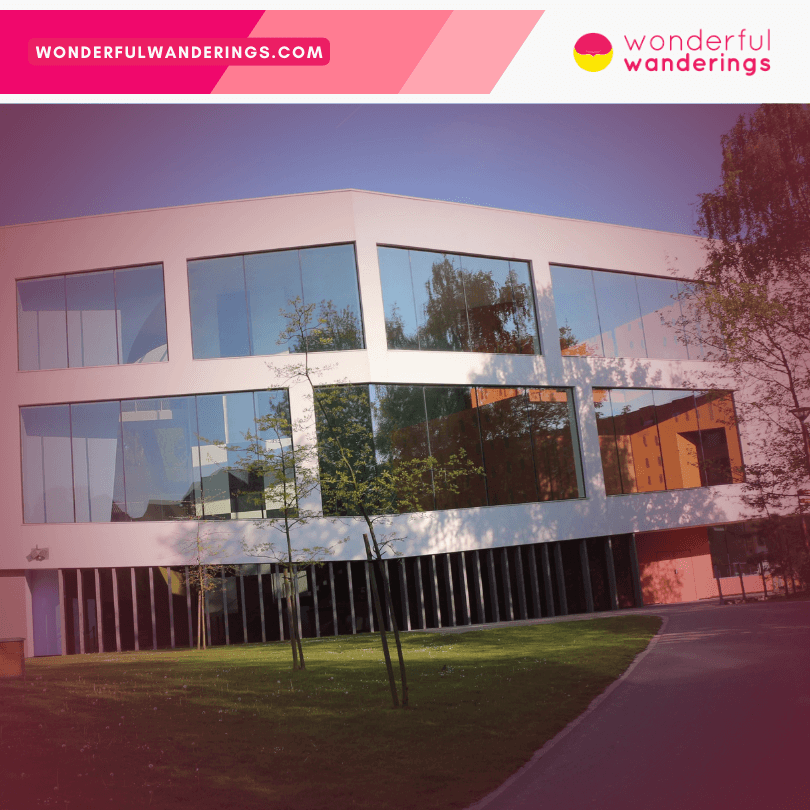
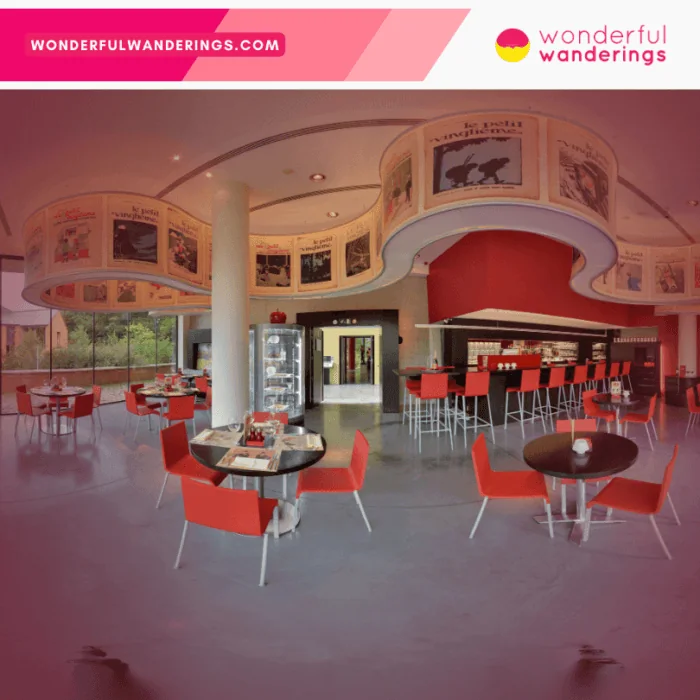
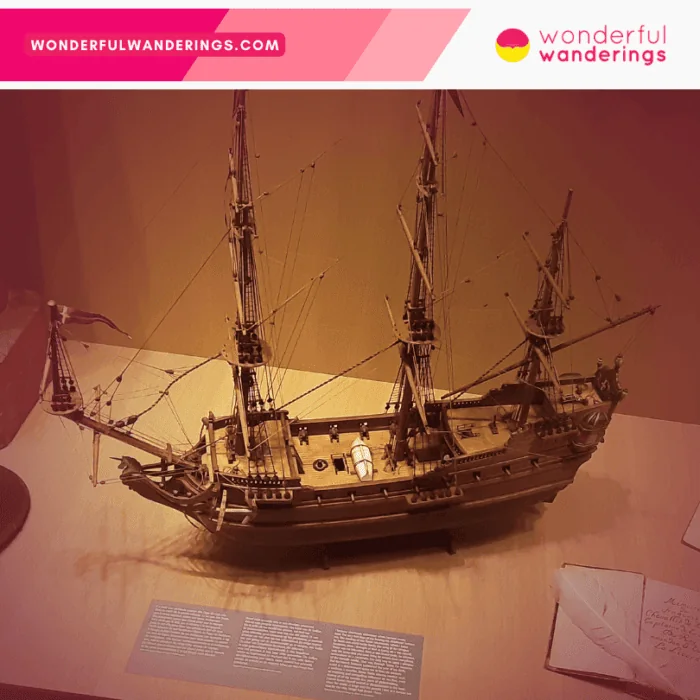
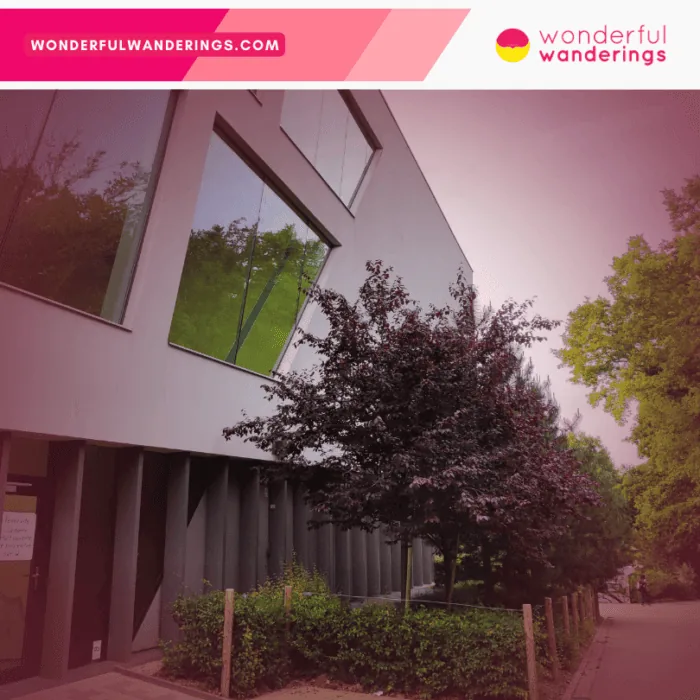
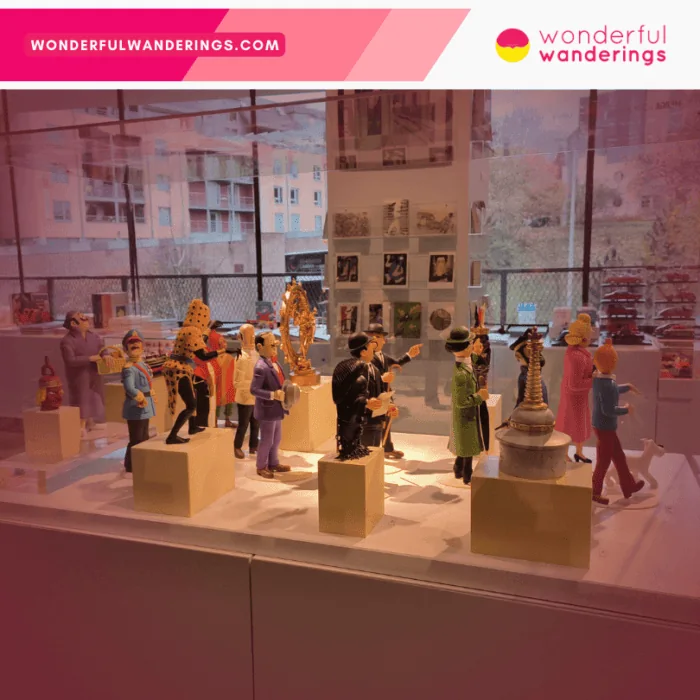
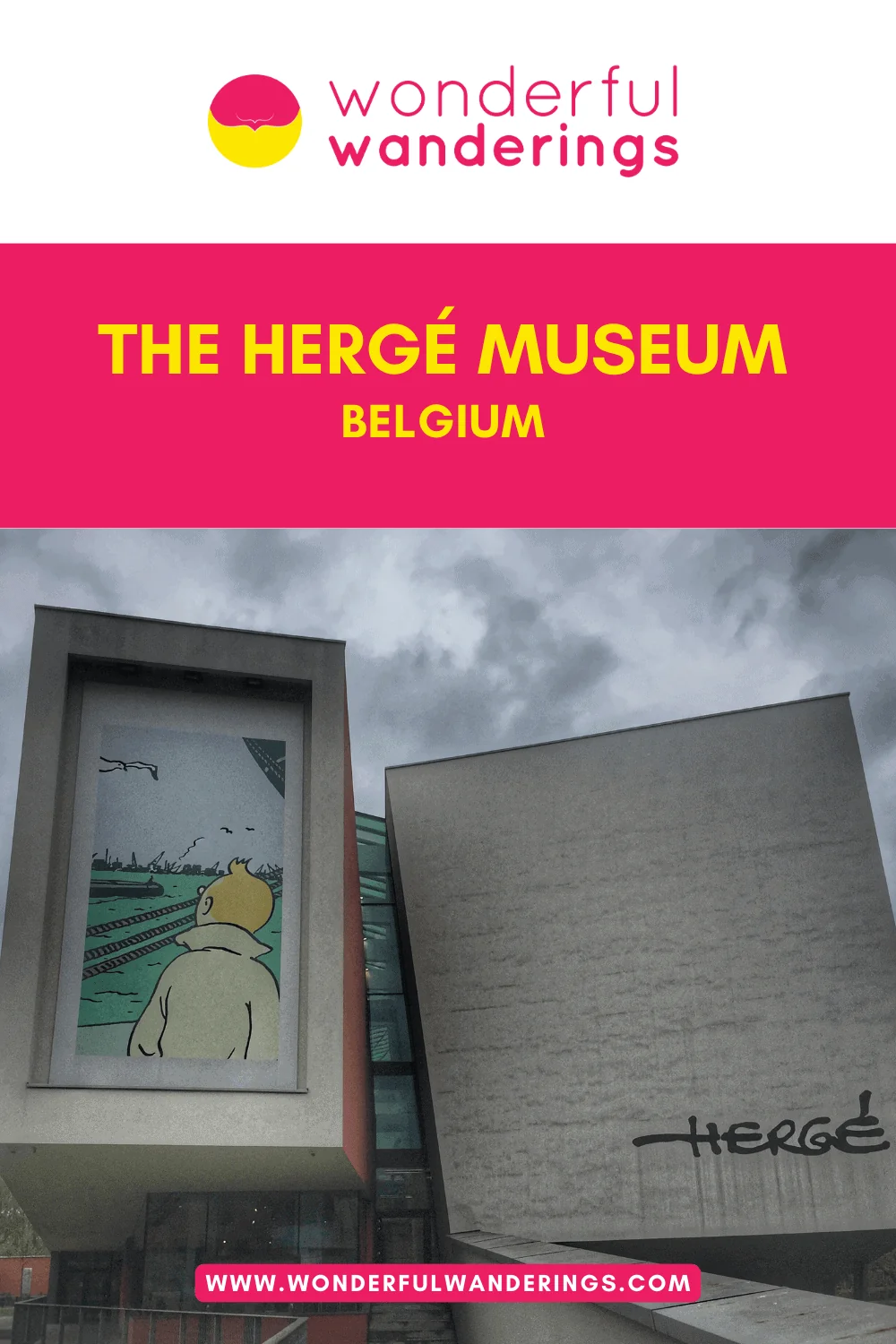

Corinne says
Sophie, This is definitely one of my absolute favorite things I’ve done in Belgium. I highly recommend it to everyone!
Sofie says
Oh nice! I’m wondering of many visitors know about it, as it’s still located outside of Brussels.
Andy says
This is top of my list next visit to Belgium – even before beer! I was raised on Tintin in both English and French and passed on the addiction to my daughter. We went to the comic museum in Brussels many years back but this has been on the radar since it opened. I always wanted to be a roving reporter because of Tintin; I guess a travel blogger is pretty close though :-)
Sofie says
I think you can call yourself the Tintin of the digital age or something Andy :D Let me know when you come!
samrat says
Sofie, I really enjoyed this post! Nice to know more about Herge & Tinitin after enjoying with them in my childhood – in the world of Rastapopoulos, Capt.Haddock, Calculus and of course Milou!
I always wondered why…when he goes to Nepal(in ‘Tintin in Tibet’), the local language spoken by the porters is written in Hindi, and not Nepali.
And another big pastime was Asterix, from across the border!
Sofie says
I’m afraid I can’t answer that question :)
peter says
Nice article but Tintin’s dog is called Snowy not Bobby.
Sofie says
My bad! I’ll correct that now. All those names in all those languages:)
Houman says
Amazing article. His work is a big part of my childhood. I wish there was a virtual walkthrough. I created one once I visited national gallery of Australia one afternoon.
Sofie says
Thanks for the comment, but I took out your link. No need to advertise your company here.
Houman says
doesnt matter. As long as you see it.
Franca says
This museum looks fantastic, very interesting and I feel so stupid for not knowing about it whilst we were in Brussels, we could have made it there somehow :(
Next time I guess!
Sofie says
Definitely next time!:)
A Lady in London says
I’ve always wanted to visit this museum. Sounds like it’s worth a trip! Thanks for sharing about your experience there.
Sofie says
Definitely worth the trip:)
Vira says
I am going to Belgium in a few weeks and the Hergé Museum is my main agenda there. I’m so excited and even more excited after reading this post. Oh I cannot wait!
Sofie says
Oh wonderful!
I can be as good as that you’ll enjoy it. It’s a great museum :)
Have fun!
Shahram Razavi says
It was a fantastic museum I have ever visited which has made a nostalgia. But I can not imagine how much cruel you are when the photography is forbidden inside! This is the age of Instagram so you should leave the lovers feel free to take some selfies and stuffs there. Please revise your policies!
Sofie says
Hey Shahram, I only wrote about the museum. I don’t run it :)
Ida . indonesia says
Now i am on the way to Museum witn my son and daughter and intold them this my fabouriye Book i read when my childhood …
i can”t image how fantastic Museum